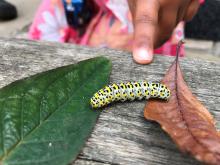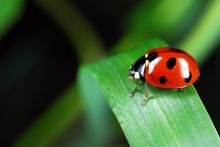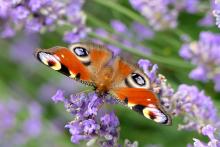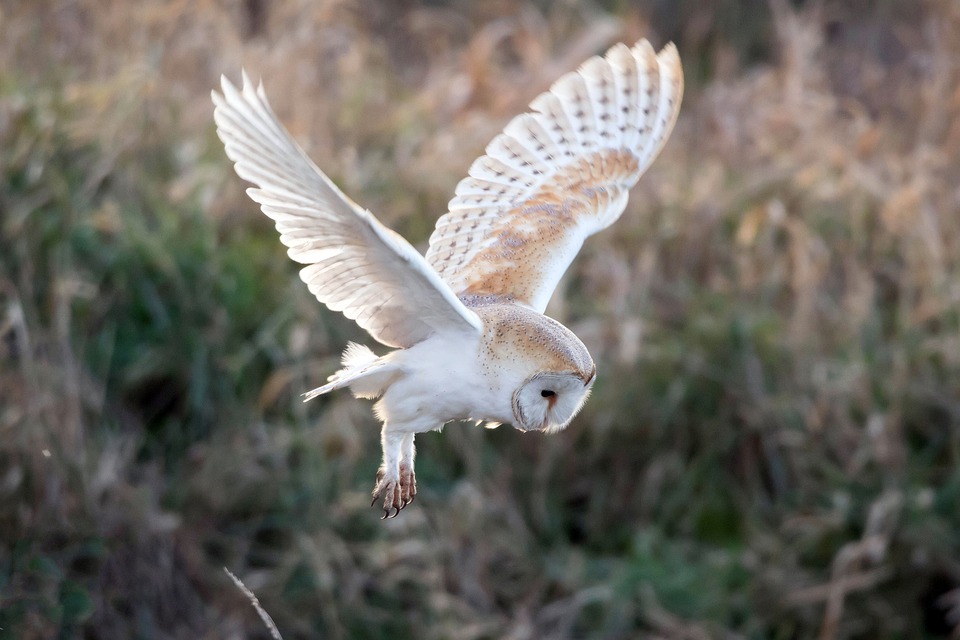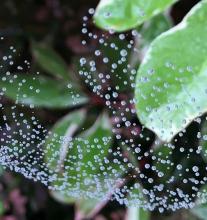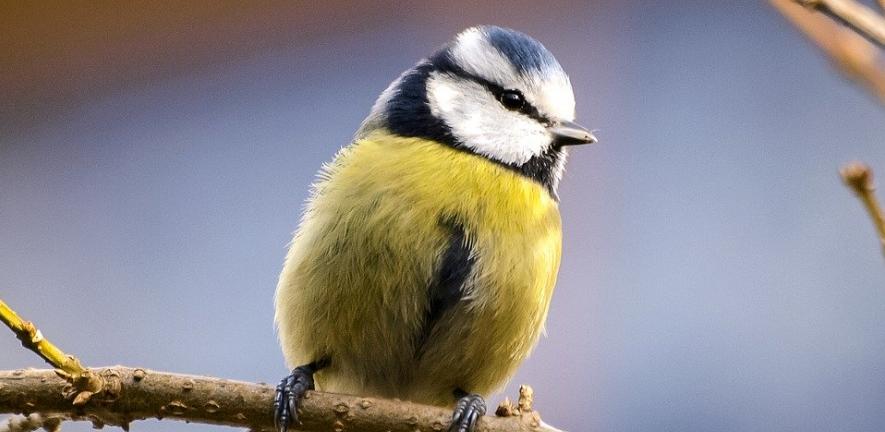
Submitted by Jessica Haskell on Fri, 2020-03-27 08:46
Before we get into some actions you can take at home this April, we wanted to let you know that the University’s Ecological Advisory Panel have been working hard, with key stakeholders, to develop our first Biodiversity Action Plan. This plan will look at how we can improve and inform our practices on the University’s operational and rural estate, ultimately aiming to increase biodiversity over the next 10 years. We can’t give too much away just yet, as the plan is currently working its way through the University’s committee approval process, but we look forward to updating you on its progress in the future!
Biodiversity in your backyard
In these unprecedented times and while we all find our new normal, we’ve tweaked our April plans for Spotlight on Biodiversity to focus on how you can use biodiversity in your backyard to support your physical health and mental wellbeing over the coming weeks.
More than ever we need the outdoors, for nature’s sake and our own. As our geographical freedom to explore is limited, we can instead slow down and take time to explore the biodiversity a little closer to home. Whether your outdoor space is a garden, a balcony or an open window we can take comfort and solace in nature.
Health and wellbeing
Research conducted by the University of Essex has looked to formally make the link between nature and wellbeing. Anecdotally, professionals within the outdoor learning, health and conservation sectors have long made the link between the benefits of working, exercising or simply being outside, with a positive improvement in mental well-being. The phrase ‘green exercise’ was coined and an extensive research programme continues today.
Five simple steps to ‘green exercise’:-
Open your window and just breathe…
-
Sit outside, not at your desk, for your morning cuppa.
-
Take a yoga mat (or towel or blanket), walk, run or workout, outside not in.
-
Sit and listen…birdsong, bees buzzing, lawns being mown…
-
Get digging, planting and exploring the wildlife in your garden.
If you’re a bit of a bookworm and interested in this topic then we’d recommend reading ‘Losing Eden: Why Our Minds Need the Wild’ by Lucy Jones. It delves into some of the research and thinking behind nature’s influence over our wellbeing and is a great book for some isolation reading!
Wild mindfulness
Taking time to sit outdoors or open a window will be vital for our wellbeing over the weeks and months to come. Drinking in the sights, sounds, smells, textures and tastes our outdoor spaces can provide that our indoor spaces simply cannot. Slow down, take note, and wildlife can inspire a connection and positivity to something more.
You may find when you’re spending more time outdoors that curiosity gets the better of you, you may spot a new insect, really tune into a birdsong or spot some new buds bursting through. Whether you’re a beginner or slightly more advanced, there are plenty of apps and resources to help improve your identification skills. We’ve included a selection below which can help you identify flora, fauna, species and sound:
https://www.nhm.ac.uk/take-part/identify-nature.html
https://www.rspb.org.uk/birds-and-wildlife/wildlife-guides/identify-a-bird/
https://www.nationaltrust.org.uk/features/our-guide-to-birdsong
The ‘PlantNet’ app (available on Google Play Store)
Can you think of some others we haven’t mentioned?
Join our biodiversity community
Launching in April, our ‘Biodiversity at the University of Cambridge’ Yammer group will be open to all staff interested in biodiversity and nature. Whether you’ve been creating projects at home with your family, been busy planting vegetables, keeping an area of your garden wild, delving into some fantastic books on nature, or whether you’d like help identifying a species you’ve discovered in your garden - this group will enable you to share ideas, photos and resources with like-minded people. We recognise that it’s a difficult time for many of us and we hope that this group can offer opportunities to not only hear what others have been up to, but also to engage with and value biodiversity at a time when we need it most.
Share your wildlife photography with us
Throughout April we will be encouraging you to post your photographs of biodiversity in our Yammer group. Further details will be posted in the group but all photos must be taken in April and in line with government guidelines relating to outdoor activity. A judging panel will select our favourite photographs at the end of the month and winning photographs will be displayed in the May issue of Greenlines, on the Environment and Energy Section’s website and our social media. Whether your photo is taken from your back garden, balcony or out your window, whether it’s taken on your phone or your state-of-the-art DSLR - we want to see any and all of your wildlife photos!For photography tips, and a list of some UK-wide photography competitions if you capture a really great shot, see the Wildlife Trusts website.
If you need some more inspiration, or just get hooked, there are a whole host of Facebook groups out there which showcase wildlife photography. ‘Discover British Wildlife’, ’Gardening for Wildlife’ and ‘365 Days Wild’ are some of our favourites and also offer practical hints and ideas for improving your outdoor spaces, whether they be gardens, balconies or window boxes.
Wild webcams
Globally, there are countless virtual opportunities to discover wildlife. Numerous research projects focusing on understanding animal behaviour or informing our conservation efforts, have set up webcams to offer insight into the natural world. As I write this I’m flicking between watching brown bears snack on leaping salmon in Alaska, elephants gathering around a waterhole in South Africa and gorillas basking in sunshine in Eastern DRC (whilst carefully avoiding the ‘Sharks in the Atlantic’ webcam…).
Looking nationally, you can visit The Wildlife Trusts website to see webcam-linked conservation projects from across the British Isles. From peregrine falcons, to puffins, badgers and bats, there are plenty of options to keep you educated, enthralled and entertained.
Wildlife gardening
There are plenty of resources and ideas out there to increase the biodiversity in your back garden. As a rule of thumb, to improve your outdoor space for wildlife, the messier the better. Being too tidy can unintentionally remove a valuable habitat for wildlife. For example, the organic debris under your plant pots can provide an excellent habitat for a wide variety of invertebrates. Leaving a patch of ‘weeds’ can provide a valuable food source, remembering the definition of a ‘weed’ is simply a plant growing where you don’t want it.
If an untidy area feels less than calm, choose a hidden space such as behind a shed and leave it to run wild, out of sight. Try to resist the urge to cut grass or plants back too early as reduced cutting regimes can allow flowers to flourish and increase cover for wildlife. As a simple guide, cut back larger shrubs or plants after flowering and leave annuals to go to seed to allow dispersal for next year.
The web links below give plenty of ideas and suggestions to help improve your outdoor spaces for biodiversity. Whether that is a larger project such as creating a pond, or planting lists for the best wildlife-friendly and native species.
https://www.wildlifetrusts.org/gardening
https://www.rhs.org.uk/advice/advice-search?keywords=wildlife
https://www.rspb.org.uk/birds-and-wildlife/advice/gardening-for-wildlife/
Land art
A quick internet search for ‘land art’ or ‘Andy Goldsworthy’ will bring a whole host of stunning visuals of land-based sculptures and works of art. Using natural materials in an outdoor space can create award-winning artwork and spaces which encourage wildlife. For example, hibernacula can provide an over wintering space for reptiles, amphibians and invertebrates as well as nesting space for solitary insects or nesting material for birds.
Support wildlife locally / further resources
https://naturalcambridgeshire.org.uk/
Have fun and stay in touch!
We hope we’ve given you a taste of what you can get up to during our Spotlight on Biodiversity month in April but we’re sure you’ve got more ideas than we do! Remember to join us on Yammer and share what you’ve been up to so we can all share the fun.
Written by Rachel Steward and Jess Haskell

